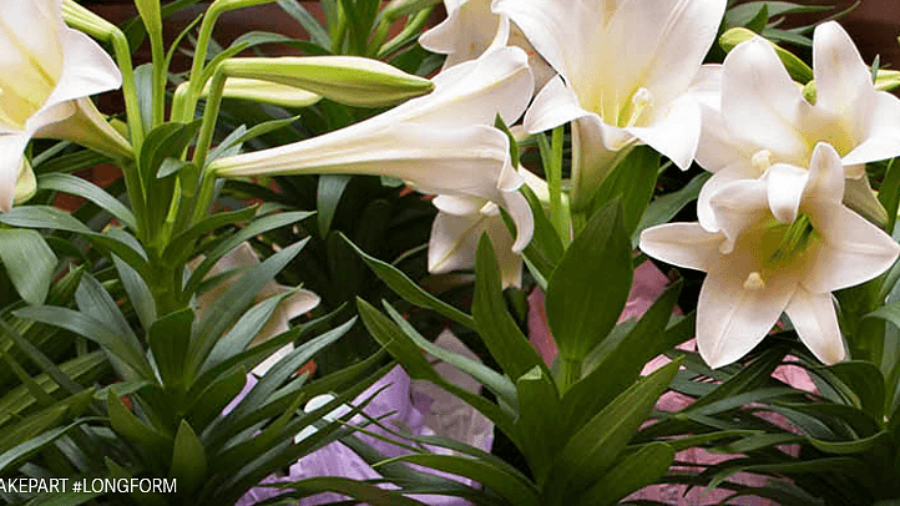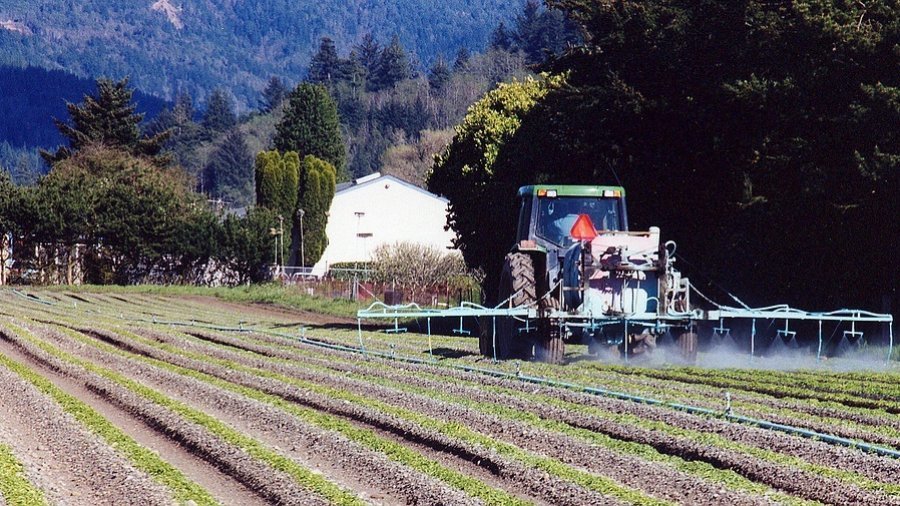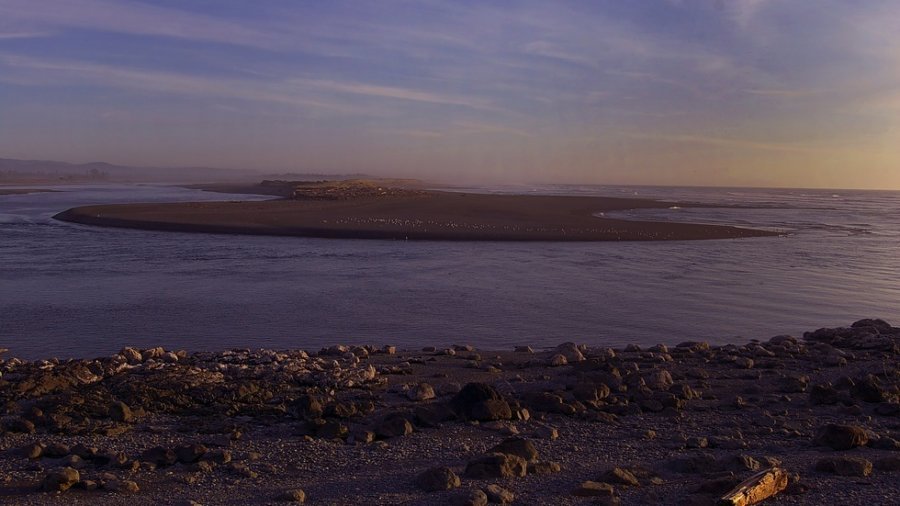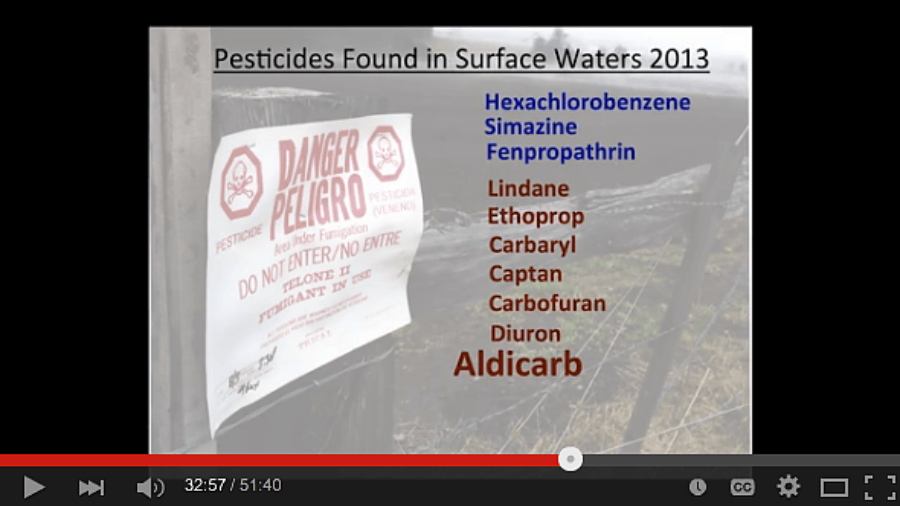Despite finding 17 pesticides in estuary waters and 10 instances of contamination, Water Board has no plans to rein in chemical use In late January, 2018, the state agency charged with enforcing the federal Clean Water Act released a long-awaited report on the results of two years of water quality testing in the Smith River Estuary. The testing detected 17 pesticides in the streams, creeks and ditches that feed the estuary, and 10 instances of contamination of the aquatic food chain. The findings appear to show that Easter lily farmers are in violation of the Clean Water Act, which was passed in 1972 in large part to protect precious aquatic resources such as the West Coast’s dwindling salmon populations.
Smith River Estuary
Since 2001, Siskiyou Land Conservancy and our predecessor, the Smith River Project, have led efforts to reduce and eliminate the annual application of 300,000 pounds of highly toxic fumigants, herbicides and fungicides on 1,000 acres of bottom land that surrounds the Smith River estuary, in Del Norte County. These pesticides are used to grow 100 percent of North America’s production of Easter lily bulbs. Two of these pesticides — the carcinogenic and fish-killing fumigants metam sodium and 1,3-Dichlropropene — are used on lily fields in pounds-per-acre amounts that are higher than anywhere else in California, which is really saying something.
What\’s perhaps most dumbfounding about such a high level of toxic pesticide use is exactly where they are applied: At the richest and most vulnerable reach of one of the world\’s cleanest rivers. Superlatives describing the Smith River watershed, which is located in the far northwestern corner of California, are inexhaustible and in no way overstated. The Smith is unique among coastal rivers in the United States, and there are few watersheds like it remaining in the world’s temperate zones. The Smith River anchors the Klamath-Siskiyou Bioregion, one of the most biologically intact, and important, large and untrammeled ecosystems left in the world. The Klamath-Siskiyou provides high quality habitat for endangered species even while ecosystems up and down the West Coast of the United States continue to be degraded by human activity. And it’s stunningly beautiful.
–The Smith River is the wildest and cleanest river in the country outside of Alaska — indeed, it is one of the cleanest rivers in the world.
— The Smith is the only major undammed river in California, and it anchors the coastal heart of the Klamath-Siskiyou Bioregion, one of the oldest, largest and wildest temperate ecosystems in North America.
–The Smith River watershed contains a higher percentage of unlogged, original ancient forest ecosystem than any other river in California.
–The Smith River contains more stream miles federally designated “Wild and Scenic” than any other river in the United States.
–Smith River salmon and steelhead runs are legendary. Some of the largest Chinook salmon (greater than eighty pounds) have been found on the Smith, and the Smith holds the state record for the largest steelhead ever caught (27 pounds).
In 2010 and 2013, the California North Coast Regional Water Quality Control Board, acting on demands by Siskiyou Land Conservancy, tested surface waters that run through Easter lily fields and feed the Smith River estuary. Water Board scientists found “acute (and) chronic reproductive toxicity,” meaning that invertebrates that make up the basis of the salmonid food chain cannot reproduce in (“chronic”), nor even survive in (“acute”), these waters. State scientists also found ten pesticides in surface waters, and copper levels that were twenty-eight times higher than allowed by state law. (Smith River lily farmers apply 40,000 pounds of Class I copper products each year.) This is an almost unprecedented abuse of a critically important ecological refuge in the United States.
It’s probably safe to say that no one likes using pesticides. Even Easter lily farmers have told me that “we don’t like using them,” adding that they have “no choice.” The lily bulb crops would be ruined, they say, without the 300,000 pounds of dangerous chemicals they apply each year to farmlands that surround the Smith River estuary and border residential neighborhoods and an elementary school.
Certainly farming is economically fraught. The weather, the pests, the whims of fickle consumers. Individually and combined, the challenges facing farmers are many. Read More
In late 2016 Siskiyou Land Conservancy released our Smith River Community Health Assessment, which clearly demonstrates significant human impacts of pesticides used on Easter lily fields. That report is now available here. Why are county health officials, and the California Department of Pesticide Regulation, ignoring the report? Click here to read more Read more
In late 2016 Siskiyou Land Conservancy released our Smith River Community Health Assessment, which clearly demonstrates that pesticides used in the cultivation of Easter lily bulbs in, Del Norte County, are impacting the health of people who live in the small town of Smith River.
Just before Easter, the national on-line news magazine TakePart has run a major story about pesticides used on the Smith River Plain to grow Easter lilies. TakePart describes itself as “the digital division of Participant Media,” the company that brought us such films as Academy Award winning Spotlight, as well as An Inconvenient Truth and CITIZENFOUR.
The Sustainable Technology & Policy Program at UCLA recently released a report that shows a combination of three commonly used, carcinogenic fumigants — two of which, metam sodium and 1,3-dichloropropene, are used in high concentrations on the Smith River Plain — “can interact to synergistically (to) increase the toxicity to humans.” What that means is that the whole carcinogenicity is greater than the sum of the carcinogenic parts.Read More
To describe an estuary as “most important” belies the crucial and interrelated habitat characteristics of estuaries up and down the West Coast. That said, with salmonid populations plummeting from Seattle to San Diego, the Smith River estuary stands alone as the terminus of a mostly wild and completely undammed coastal river. If endangered coho salmon Read more
Our presentation on pesticide use at the Smith River estuary is now up on YouTube.Read More
In March 2015, in one of the most Orwellian displays of deference to industry ever shown by a California state agency, the California Department of Pesticide Regulation (DPR) gave Easter lily farmers an “Integrated Pest Management (IPM) Innovator Award” for allegedly reducing pesticide use “by about 50 percent over the last 20 years.” Read More






